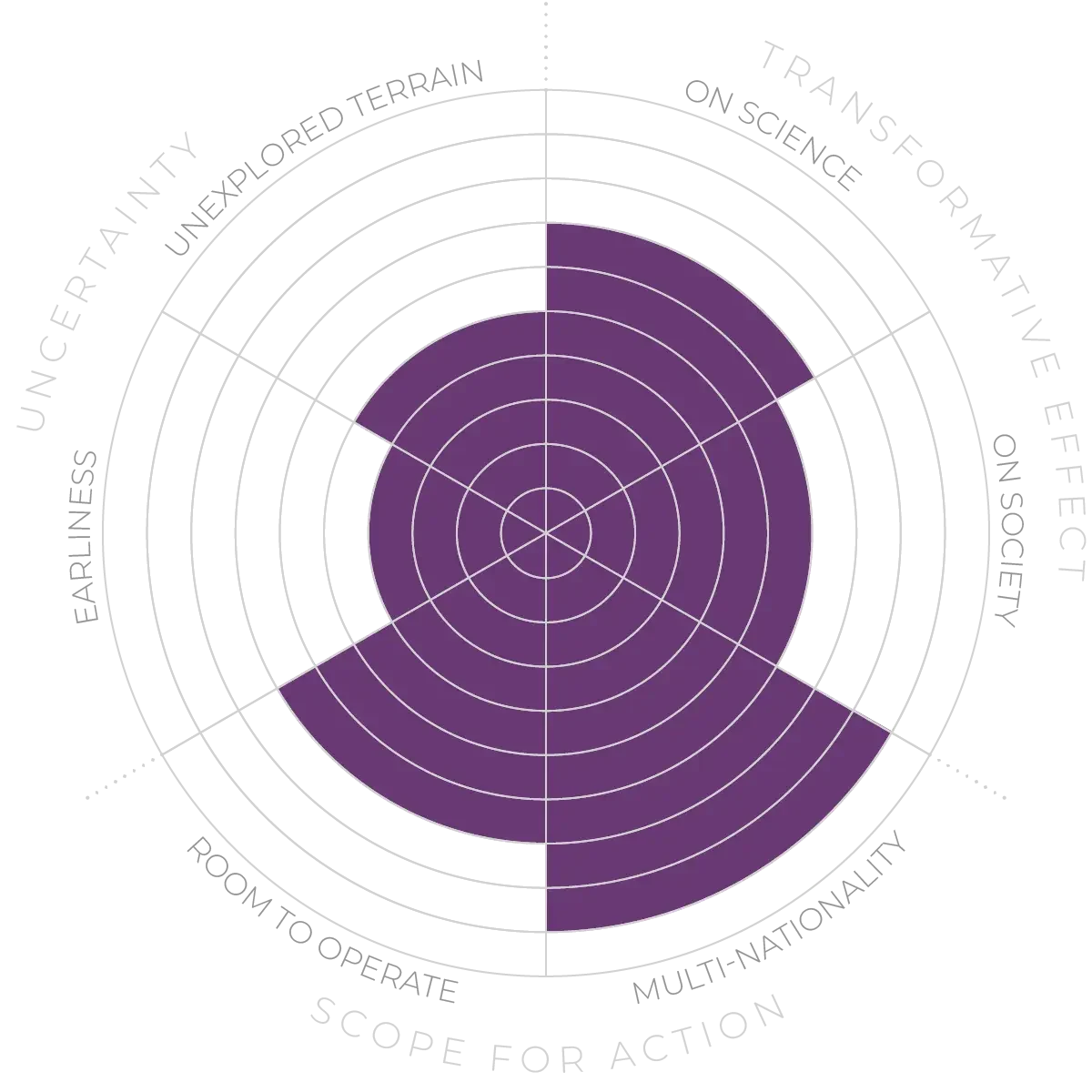Future Horizons:
10-yearhorizon
Error correction is routine
25-yearhorizon
Qubit availability makes QEC easy
Researchers have long planned to integrate quantum error correction (QEC) resources into their quantum processors.13Theoretical research indicates that holding the bit in a network of qubits designed to detect and correct errors as they arise can significantly reduce the chances of a computation going awry. Examples include the surface code14 and the low density parity code (LDPC).15 Though this increases the required number of qubits, research in this area has uncovered ways in which this overhead can be reduced.16
To avoid the overhead of error correction, some other techniques have been effective for NISQ devices. These include the implementations of “error suppression”, which decreases the errors created in hardware operations, and “error mitigation” routines that inspect circuit operation and inject “inverted” noise to clean up qubit states while a computation is ongoing.17 18 Other recent error mitigation methods deal with noise fully in post-processing, that is after the readout of quantum computers, and have been proven to be optimal.19 20 Noise-reduction techniques applied to the classical electronics used to control the circuit have also proved to be useful. These can reconfigure the electronics’ settings and the signals applied so that the information held in qubits is better protected.
Quantum error correction and noise mitigation - Anticipation Scores
The Anticipation Potential of a research field is determined by the capacity for impactful action in the present, considering possible future transformative breakthroughs in a field over a 25-year outlook. A field with a high Anticipation Potential, therefore, combines the potential range of future transformative possibilities engendered by a research area with a wide field of opportunities for action in the present. We asked researchers in the field to anticipate:
- The uncertainty related to future science breakthroughs in the field
- The transformative effect anticipated breakthroughs may have on research and society
- The scope for action in the present in relation to anticipated breakthroughs.
This chart represents a summary of their responses to each of these elements, which when combined, provide the Anticipation Potential for the topic. See methodology for more information.



